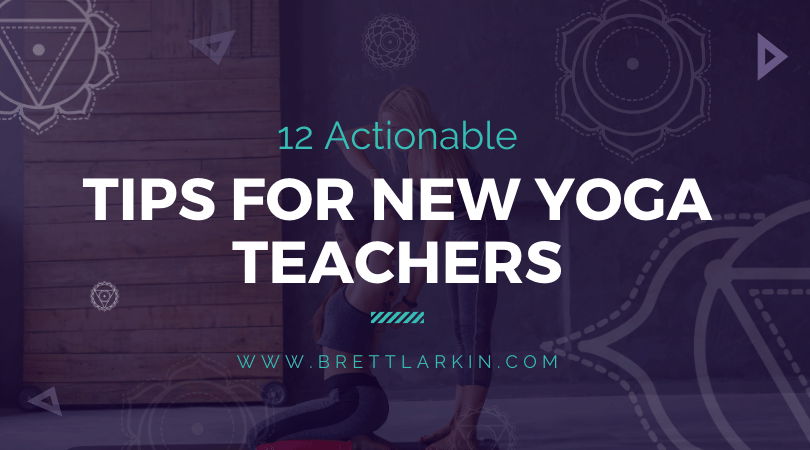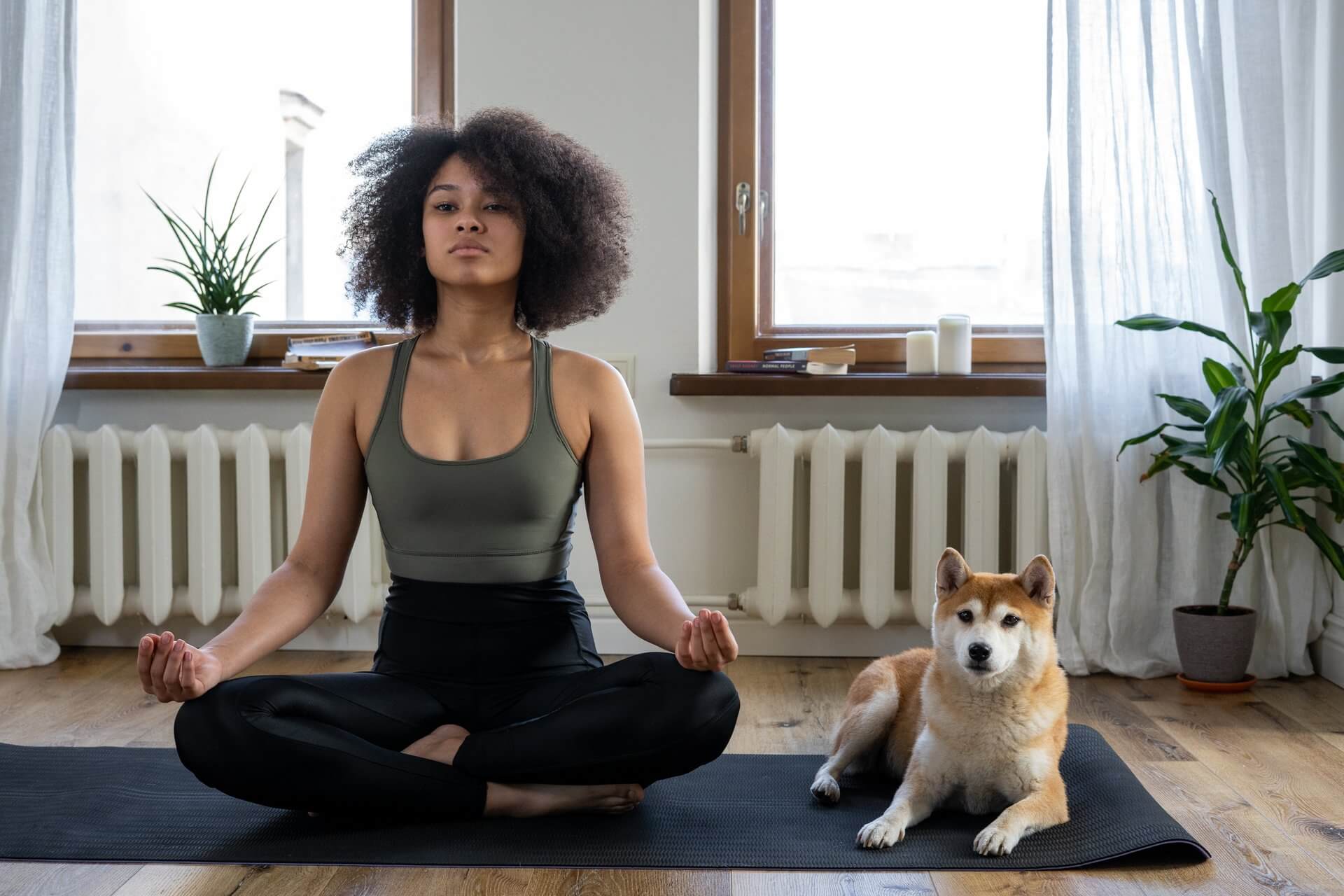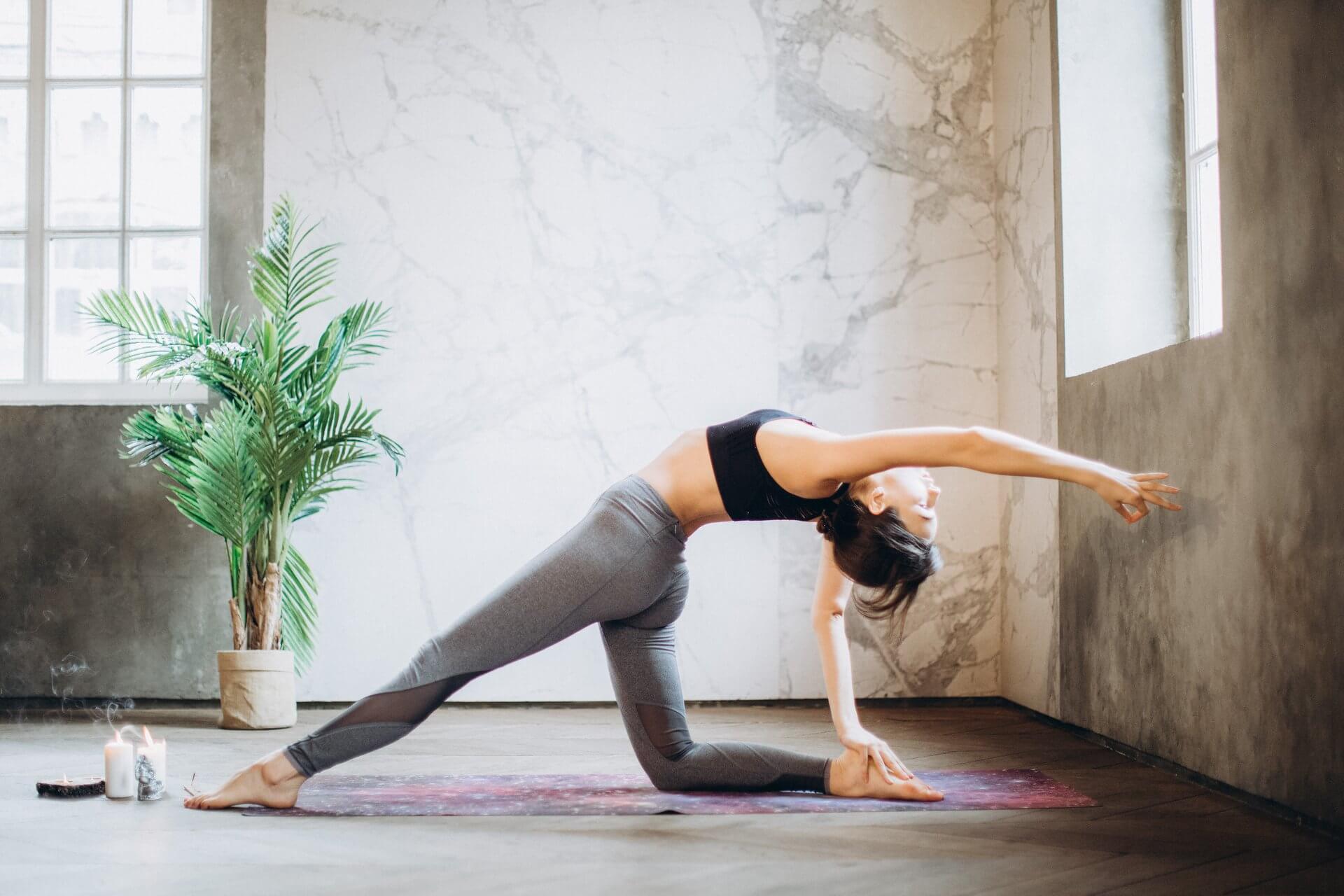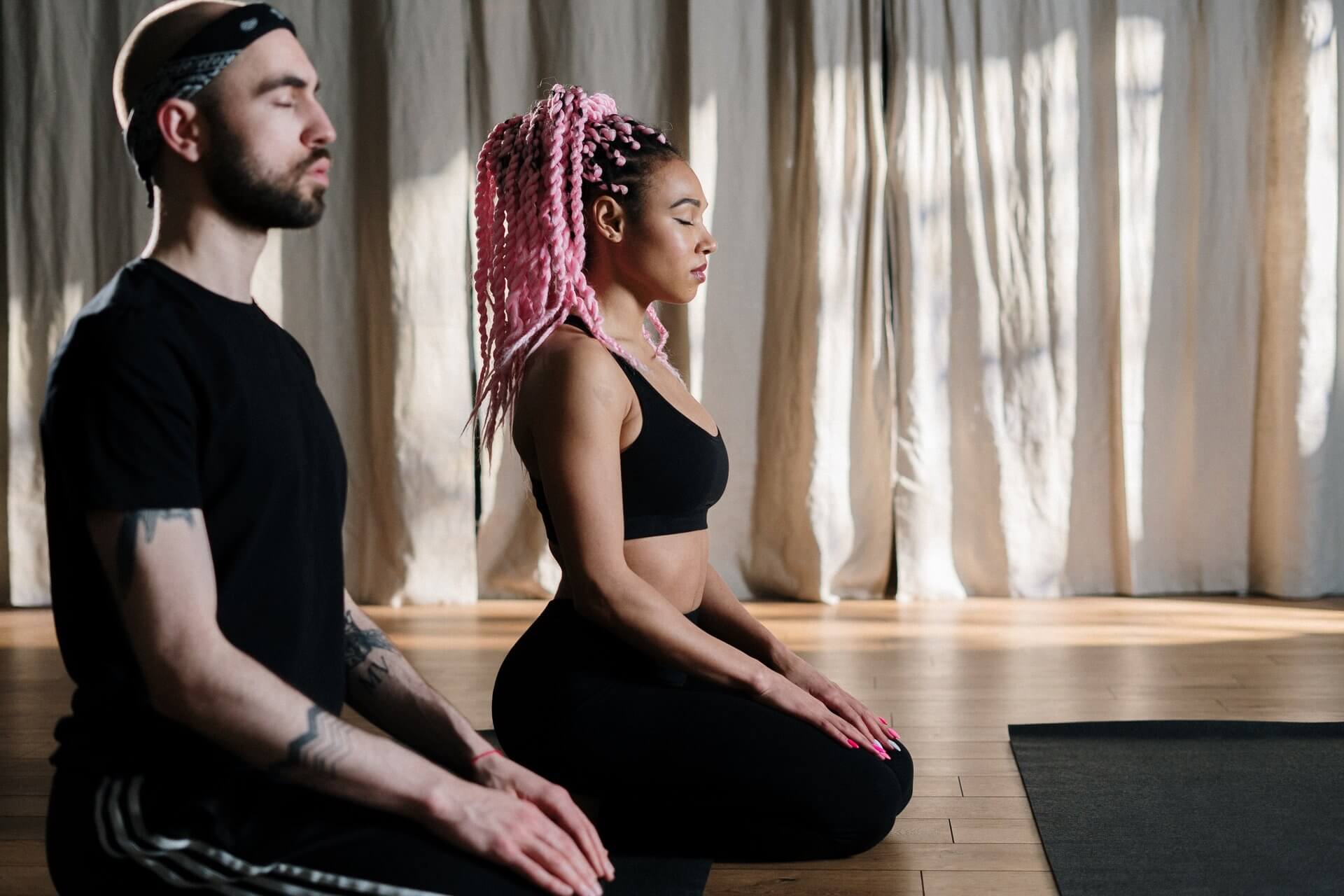
The moment has finally come, all the steps you have taken to get you to this very moment in time…..
You finally get the opportunity to teach your first yoga class.
How exciting right?
Except the excitement is also mixed with a heavy dose of nervousness, fear and self-doubt.
Congratulations, all these feels are completely normal and can only lead to one thing, GROWTH!
Students in my yoga teacher training course are ALWAYS asking me for tips on how to keep nerves at bay, so I wanted to share some actionable yoga teacher tips you can use to overcome nervousness and fear. Hopefully with these tips, you can show up to class and spread all those good yoga vibes that the world so desperately needs!
1. Teach As Much As Possible
The old saying “practice makes perfect” is so true however, let’s change it up to “practice makes progress”! Being persistent and consistent with practicing your teaching skills will help you feel more confident and comfortable when teaching.
When you’re first getting started, be prepared to practice teaching on anyone that is willing to get on their mat with you! Your friends, family, dog and anyone and everyone that you can get in front of to practice finding your yogi voice, creating sequences, class themes and sourcing yoga playlists too.
Another great tool when practicing is to film yourself teaching. This can just be you teaching to the camera or you can also film yourself teaching others. Yes, it’s totally uncomfortable and awkward but one of the best ways to observe yourself from your student’s perspective. It’s a great way to catch yourself using filler words, nervous tics (we all have them) and overall how you perform when teaching. Keep reminding yourself “progress not perfection”.
2. Ground Yourself

Creating a grounding ritual to help get you out of your thinking mind and into your feeling body will help alleviate any performance nerves you may have prior to teaching any classes. There are many ways to ground your energy before class and here are a few suggestions to try out:
- practice your own yoga sequence,
- sit in meditation for 5-10 minutes,
- hold onto grounding crystals such as hematite or smoky quartz,
- use grounding essential oils such as frankincense or sandalwood,
- dance around the room to your favorite song,
- use a yoga-based journal to explore your inner world,
- or even just take five deep breaths with your hand over your heart.
The most important thing is to use this grounding ritual to come back home to your body and trust that everything will unfold the way it should. You got this!
3. Own Your Role As Teacher
Sometimes it can be SO scary when you’re standing in front of a group of people who are eagerly waiting to listen to every word you say. They expect you to teach yoga and will follow literally any cue that you give them.
And if you’ve never taught a yoga class to so many students before, this can be downright terrifying.
The good news is that these people likely don’t know that you’re terrified and are mostly there to learn, anyway. And when you really think about it, you do know a lot about yoga… probably a whole lot more than they do. Everything you learned in your yoga teacher training has prepared you for this and although you might lack experience in teaching yoga, you definitely know the things needed to do so.
After all, yoga is a journey, right? And you have a whole lot to offer by way of knowledge and experience as a yoga practitioner, even if instructing yoga is still so new to you. So embrace your role as a yoga teacher and remember why you want to teach yoga in the first place. The truth is that you’re there to help the world find its way back to Source and this is the way to make that happen.
4. Remember To Breathe
Coming back to your breath is a powerful tool, not just in practicing yoga but also in life in general. So if you ever feel like you need a moment to de-escalate your low key panic attack while you’re teaching yoga, just take a few deep breaths. Have your students hold a pose for a few breaths so that you can catch your own. Create space for yourself to breathe and take as much time as you need to move onto the next sequence or posture.
5. Practice Your Sequences

One of the things that shocked me as a new yoga teacher was how difficult it was to guide a sequence at a pace that felt natural to me as a student. It’s super easy to flow through the poses on your own, or to guide students through a sequence, but when you try to do both at the same time…
…that’s when things can get a little messy.
So before you teach a new class, practice your own sequence and cueing at home. See how it feels to do the sequence and feel what it is like to follow your own cues. You can record yourself teaching yoga and then play it back as you follow along through the poses to test out the pace.
Doing this will also help you feel what it’s like to move through the poses that you laid out in your class plan, as well. See what it’s like to be your own student and adjust anything that might make the sequence uncomfortable for your students.
6. Always Prepare And Bring Notes To Class
One of the best ways for new yoga teachers to combat anxiety is to fully prepare for the worst-case-scenario that we tend to create in our minds. Even if you never ever encounter a worst-case-scenario, a lot of the anxiety you may have can be mitigated by simply being prepared. So before each class, always create your class plan at home, including which music you’ll play, what passages you’d like to share, and even what you will say at the start of each class. Then bring your plan to class with you so that you can follow along with ease.

7. Have Some In-Case-Of-Emergency Poses
Even if you put in the work, plan every detail of your classes, and take the time to practice your sequence…
…there may still be a time when it’s just.not.working. Maybe your students aren’t feeling it or maybe you become overwhelmed with stage fright. Or maybe COVID strikes and suddenly the studio where you teach requires social distancing and masks!
Whatever the case may be, sometimes things just won’t work how you thought they would. Instead of panicking, revert to an in-case-of-emergency pose.
For me, that’s child’s pose. Whether I find that students need a break or if I need a break for myself, I offer a super restorative pose for everyone to regroup.
Some other good poses for emergencies would be:
8. Move Around The Room
Rather than staying at the front of the class and physically disconnected from your students, try moving around the room. Of course, there are so many different perspectives on whether or not you should be demonstrating at the front of the class, moving around the room while giving instructions, or offering hands-on adjustments, so you don’t always have to move around the room if you don’t feel like it.
But it’s always a good option to have in your back pocket when you give instruction.
Not only does it help you stay present by being able to observe every single one of your students, but it also breaks up the energy of a room as well.
9. Commit To Your Own Daily Practice
This advice may be a bit obvious but it’s absolutely worth mentioning. When you are forever a student, you will never forget what the experience is like to be a student in your class.
It’s not just that, either.
You likely became a yoga instructor because you genuinely love the practice. And when you first start out, it can be easy to replace your own practice with teaching. Over time, though, you may begin to resent the practice instead of love it since ‘yoga’ suddenly became so much work instead of play.
So commit to your own daily yoga practice so that you can stay connected to your role as a yoga student and you can love the journey.
10. Focus On The Students Who Do Like You

Not all students will like what you have to offer. Just like not all people will vibe with you in day-to-day life, neither will the students in your yoga classes. And for new yoga teachers, this can weigh pretty heavily on your confidence.
But don’t let it!
Instead, focus on the students who love your classes and what you’re providing them. These are the students you’re here to help and they’re the ones that will get the most out of your classes.
Besides, if you try to make everyone happy, then your classes will end up being a hodge-podge of what you think everyone wants rather than a flow that you actually want to teach. So let go of any attachments to being liked as a yoga teacher and just focus on what you can share with the students that do like you.
11. Channel Your Teacher or Mentor
Pick one or two teachers or mentors that you really admire and channel their energy throughout class. Prior to the start of class as you are getting grounded, visualize this teacher in your mind’s eye. Scan through the characteristics of your teacher that inspires and uplifts you as a student. Allow this channeled energy to fill your mind and body with positive energy. Use this channeled energy combined with your own energy and personality to create your own unique style of teaching.
12. Visualize Your Win
Visualization is a tool used by highly successful athletes to not only see but also feel their success prior to the actual event. This technique can increase mental focus and stimulate a heightened level of confidence. Take some time prior to your class to sit, close your eyes and breathe. Let your mind and body explore the images and sensations when teaching a powerful yoga class. Be sure to take extra time to visualize the positive outcomes you have created for your students by teaching from your heart. Dream big!
Remember that everyone starts somewhere and the only way to become a great yoga teacher is to get out there and teach. Feeling the fear and showing up anyway will only bring you that much closer to your dreams.
Over time, teaching yoga will become second nature for you. You just need to learn how to do it in a way that feels good for you. And that comes with experience.
I hope that you liked these yoga teaching tips for new yoga teachers! Do you have any advice that you think I missed? Drop yours in the comments and let’s make this a collaborative list for all new yoga teachers everywhere!
Namaste

YOU MIGHT ALSO LIKE
- Somatic Yoga Workshop Ideas for Teachers
- Somatic Yoga For Yoga Teachers: Everything You Need to Know in 10 Steps
- How to Teach Somatic Yoga: A Practical Guide for Instructors
- How Much to Charge for Zoom Yoga Class: A Practical Pricing Guide
- Comprehensive Guide to Your Yoga Service Agreement
- How To Create Mindful Somatic Yoga Sequences Your Students Will Love
- What Is Mindset Coaching? A Complete Breakdown
- 5 Affordable Yoga Teacher Insurance Plans (Updated 2024)
- How To Make A Life Coaching Intake Form
- 7 Steps To Start A Life Coaching Business
- What Is A Self Love Coach? And How To Become One
- Self-Coaching: How To Become Your Own Life Coach
- Types Of Life Coaches: How To Choose Your Life Coaching Niche
- 20 Awesome Ways To Make Money As A Yoga Instructor
- Life Coach Marketing: A Comprehensive Guide For Long-Term Growth









